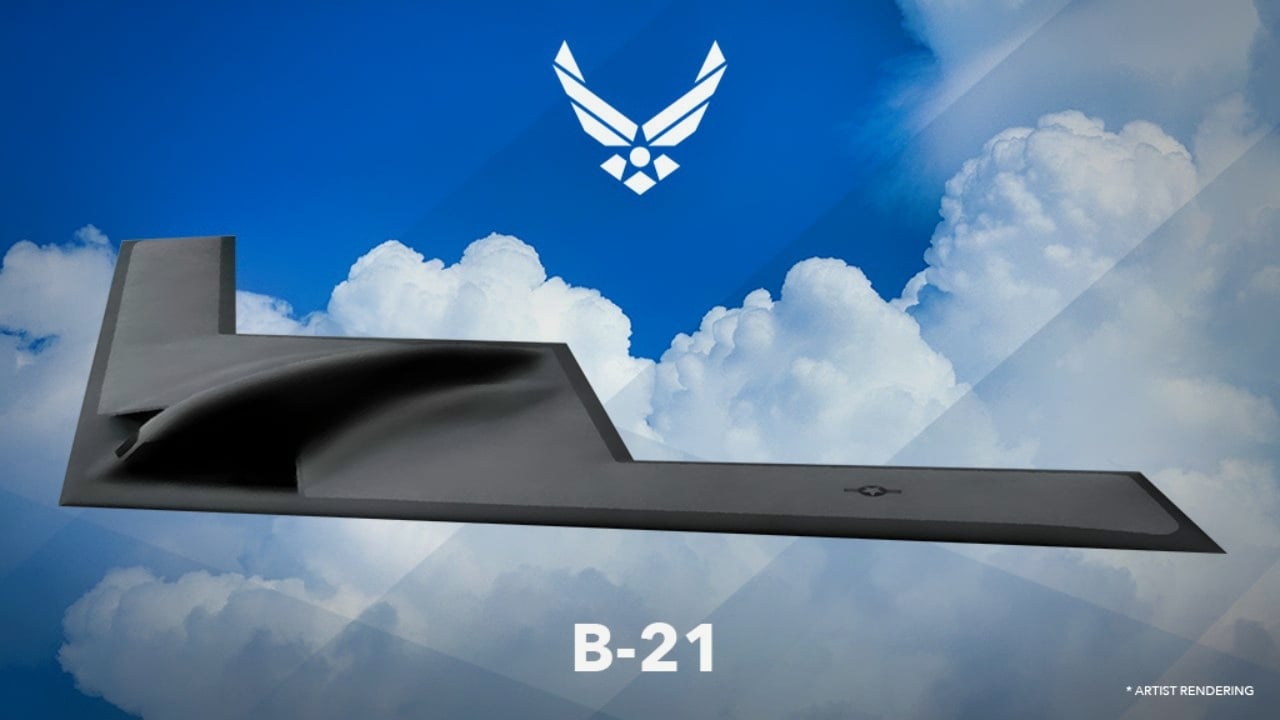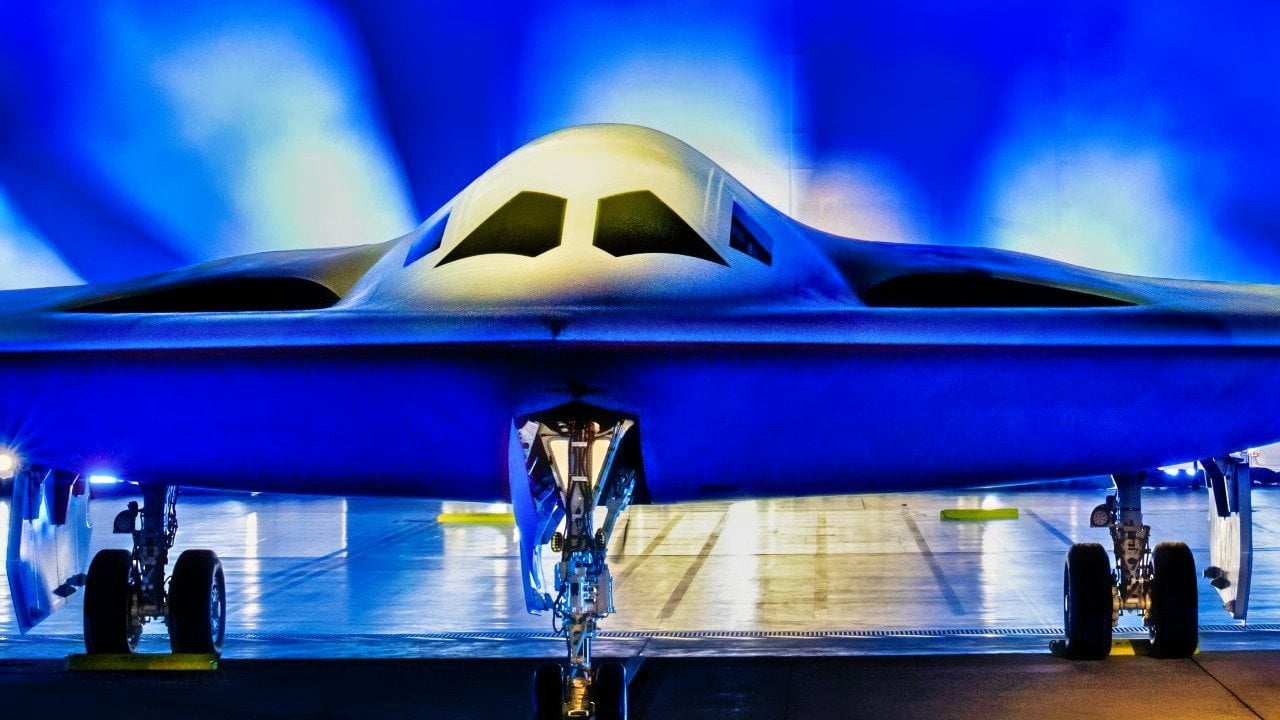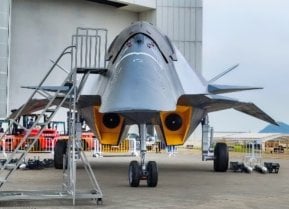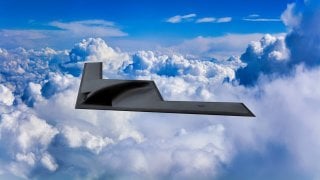The Air Force's B-21 Raider Bomber In 4 Words
The U.S. Air Force (USAF) plans to procure a minimum of 100 B-21 Raider bombers, a sixth-generation stealth aircraft designed to replace aging B-1B Lancers and complement upgraded B-52 Stratofortresses.
How Many are Needed?: The U.S. Air Force (USAF) plans to procure a minimum of 100 B-21 Raider bombers, a sixth-generation stealth aircraft designed to replace aging B-1B Lancers and complement upgraded B-52 Stratofortresses.

This number reflects both internal needs, considering America's existing stealth bomber fleet, and external comparisons to adversaries like China's 180 H-6 bombers and Russia's 121 strategic bombers. Hypothetically, 301 B-21s would match the Sino-Russian aggregate, but the Air Force's current production goal reflects budgetary and strategic realities.
With the Raider's operational debut anticipated around 2026-2027, the program remains vital to maintaining U.S. global strike capabilities.
How many B-21s does the U.S. Air Force (USAF) need? Well, “need” is a rather subjective word. My macroeconomics professor at the University of Southern California, Peter Gordon, was fond of saying “There’s no such thing as ‘needs,’ because there’s always substitutes.”
Thus, Americans could measure this need and answer this question through two different metaphorical yardsticks: (1) America’s own current bomber fleet numbers, and (2) those of our great power adversaries.
Internal yardsticks
For starters, let’s look at America’s current strategic stealth bomber, the Northrop B-2 Spirit, which is the original “stealth bomber” and the direct ancestor of the Northrop Grumman (post-merger) B-21. A total of twenty-one B-2s were built, starting in 1987, and reportedly nineteen remain in the USAF inventory. As for the first so-called “stealth fighter,” Lockheed Skunk Works’ F-117 Nighthawk was actually used strictly as a bomber in actual combat operations, ergo I’m counting her sixty-four platforms as “bombers” for the purposes of this number-crunching exercise—even though she’s officially been retired from frontline combat duty and relegated to training status.
So then, if we’re going strictly by extant stealth bomber stats, that brings us to a “need” for eighty-five Raiders to match those production numbers.
Now, to make this hypothetical exercise complete, let’s factor in America’s bombers of the non-stealth variety. The USAF has the mighty Boeing B-52 Stratofortress. However, the Air Force brass has no intention of replacing it with a stealth plane; instead, the B-52H models are slated for the B-52J upgrade. On the other hand, the thirty-nine-strong Rockwell B-1B Lancer (AKA the “Bone”) fleet is overdue for retirement; the Bone’s supersonic capabilities and impressive combat record notwithstanding.
So then, eighty-five plus thirty-nine gives us a hypothetical “need” for 124 B-21s.
“Keeping Up with the Joneses”
For those of us old enough to remember that phrase, the “Joneses” in this case refers to America’s great power “near-peer” rivals, China and Russia.
One of the major motivational factors behind getting the B-21 Raider operational sooner rather than later is China’s own prospective sixth-generation strategic bomber program, the Xi’an H-20 (aka Hong-20, Xi’an H-X), which represents the People’s Republic of China’s (PRC) first would-be long-range strategic bomber.
Assuming the H-20 program actually gets off the ground (both literally and figuratively), how many airframes the People’s Liberation Army Air Force (PLAAF) actually plans to order remains anybody’s guess. Meanwhile, the current PLAAF bomber fleet, according to the World Directory of Modern Military Aircraft (WDMMA), consists of 120 Xian H-6 airframes; the H-6 is a license-built copy of the Soviet-era Tupolev Tu-16 (NATO reporting name “Badger”) twin-engine jet bomber. Meanwhile, the People’s Liberation Army Naval Air Force (PLANAF) has an additional thirty H-6s, bringing the PRC’s total bomber strength to 180.

A discussion of the former Soviet Union makes a convenient segue to the second variable on the near-peer rival equation. Going back to WDMMA’s stat sheets, the Russian Air Force bomber fleet is comprised of fifteen Tupolev Tu-160 “Blackjacks,” forty-seven Tu-95 “Bears,” and fifty-nine Tu-22M “Backfires,” for a grand total of 121 bomb-toting strategic warbirds (not counting smaller fighter-bombers).
So, if, strictly hypothetically speaking, the USAF wanted its B-21 production numbers to match the Sino-Russo aggregate, 301 Raiders would need to be ordered.
Okay, so now what on B-21 Raider?
In the meantime, the Air Force brass has remained committed to the B-21—along with the production goal of a minimum of 100 airframes—which is more than can be said for, say, the beleaguered Next Generation Air Dominance (NGAD) sixth-generation fighter jet program. The sense of urgency to find a viable successor to the USAF’s aging B-1B Lancer as well as B-2 Spirit fleets remains palpable.
The warbird’s expected operational service debut has been pushed back to 2026 or 2027. Time will tell.
About the Author: Christian D. Orr
Christian D. Orr is a Senior Defense Editor for the National Security Journal (NSJ). He is a former Air Force Security Forces officer, Federal law enforcement officer, and private military contractor (with assignments worked in Iraq, the United Arab Emirates, Kosovo, Japan, Germany, and the Pentagon). Chris holds a B.A. in International Relations from the University of Southern California (USC) and an M.A. in Intelligence Studies (concentration in Terrorism Studies) from American Military University (AMU). He has also been published in The Daily Torch, The Journal of Intelligence and Cyber Security, and Simple Flying. Last but not least, he is a Companion of the Order of the Naval Order of the United States (NOUS).
Image Credit: Creative Commons.


